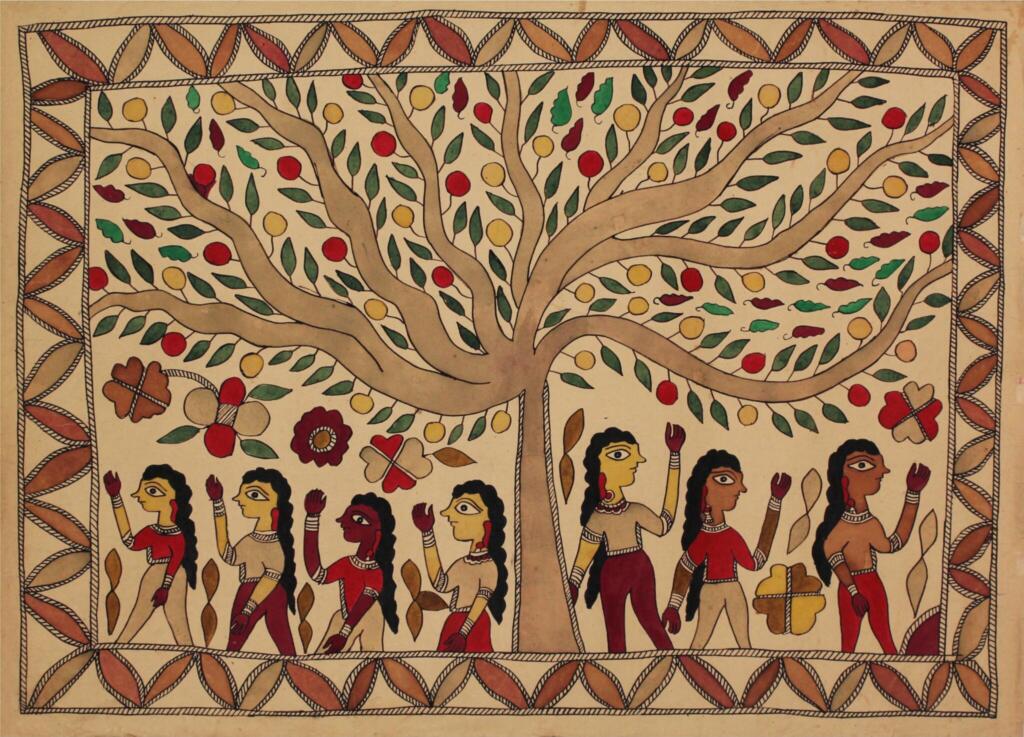This topic is close to my heart. I believe craft-based livelihoods have the potential to stabilise rural areas and mitigate climate change. I wrote this short piece on the One Nation One Product scheme while travelling by train. This piece was rejected by Indian Development Review (IDR) and People’s Archive of Rural India (PARI).

Having worked in the rural livelihoods sector, specifically craft-based livelihoods, I cannot help but spot handmade products wherever I go. Their current state of affairs, which is mostly terrible, makes me really sad though. Terrible because this sector has never received the required focus despite it being the second largest livelihood generator, offering immense opportunities in rural areas, where agriculture is becoming increasingly unpredictable given erratic weather conditions.
Further, COVID-19 dealt a severe blow to artisans whose handmade craft products are largely non-essential, with much cheaper machine-made alternatives. No physical exhibitions could be held during the pandemic which are the most significant source of sales for artisans.
I have often thought that trains and railway stations can be a good place to market local craft and other handmade products. When I saw the announcement of “One Station One Product” in the Indian Government’s Union budget 2022-23, it raised my hopes (only to be dashed later)! To quote from the budget:
The main objective behind One Nation One Product is to make railway stations a promotional and sales hub for local products. This new initiative will act as a marketing hub for the sales, promotion and upliftment of local products thereby contributing to the growth of industries in a particular area. Local artisans viz. Potters, weavers, handloom weavers etc. are expected to be greatly benefitted by this.
I obviously welcomed this scheme and read up more about it. I gathered that South Eastern Railway (SER) Authority is providing infrastructural facilities and all sorts of assistance to the stall owners for successful implementation of One Station One Product. Passengers have easy access to stalls to buy products. Other necessary assistance is also provided to sell products at Station Premises as well as in trains till the next stopping station. SER says that: “The initiative will provide a major boost to local artisans to display their products to the large number of passengers coming from different parts of the country.”
During my recent travel, I had the opportunity to check out two railway stations under the South Eastern Railway Zone. It was a sad attempt, a mere lip service to showcasing local crafts. There was a bench and a poster. A bunch of ordinary bags (badly done), few framed paintings (nondescript), hand stitched purses made from ugly synthetic power loom fabrics were on display in one station. Another had jute bags and a few bottles of honey. The people managing the two stalls had no idea of what they were selling and why. They only knew that the stall was functional for 15 days and looked relieved that it was their last day. They were constantly checking their phones, with no willingness to engage me as a buyer. Forget calling out to the passengers who just walked by.
The reason I write this is because an unenthusiastic attempt does more damage than no attempt. Quite likely that this endeavour would not be popular, sell enough or generate much revenue. Following which, it will be dropped saying “we tried, it did not work”.
This is a huge opportunity. I urge all relevant stakeholders to make One Nation One product work. Here are some recommendations for improving it:
- Bring artisans to sell their products with the NGO employees. Let them tell their stories and own their crafts.
- Give them an ID card to access trains and people.
- Make the cart mobile and not stationary in one place.
- Popularise the concept, make announcements, create advertisements.
- Choose your finest products, present your region and artisans and do justice to their skills.
- Let district authorities and concerned officials at the railways engage with craft patrons, identified as mentors and take their suggestions, for the scheme to be designed better.
Go whole-hog or do not do it at all. Half-hearted attempts never achieve anything. Please do not let our artisans down.

Anuradha Pati
Anuradha is an independent development professional with deep interest in craft-based livelihoods, reuse, recycling and sustainable living. She is from Rourkela, Odisha. She lives in Bangalore, Karnataka with her husband Dilip Jose and their adopted stray cat Momi.



